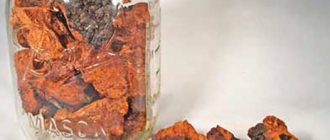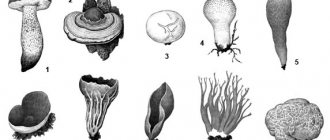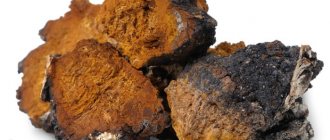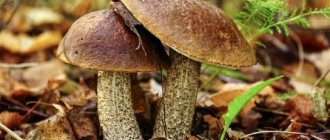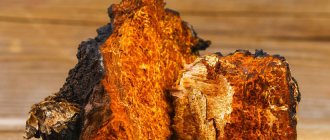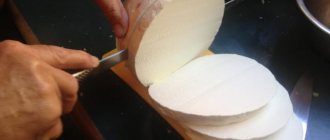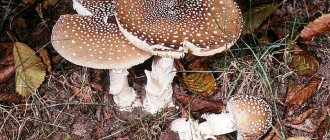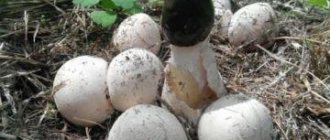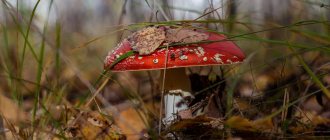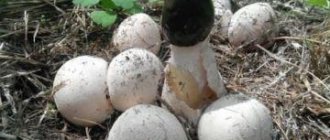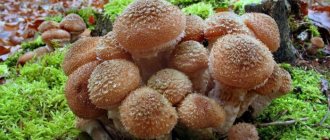The weight of the fruiting body of the mushroom can reach almost 3 kg. It can grow on a tree for several decades, affecting areas of the bark that lack integrity. The spores form growths of disproportionate shape. They have a deep dark shade; there are a large number of cracks and light veins on the surface. Every year the fungus makes its way closer to the trunk, as a result of which the tree gradually dies.
Fungal growths can be found in forest-steppe and taiga Russian zones, in forests and birch groves. In addition, chaga grows in Korean, American countries, and in mountainous areas. It is collected in different seasons, the main thing is to remove it from a living, not damp tree. When collected from dead plants, the mushroom will not have the desired positive effect on the body, since the activity of the valuable components in the composition will be negligible. The optimal storage method is crushed and dried. Birch mushroom has incredible health benefits. Ancestors believed that it helps to cope with hundreds of different ailments. Until now, “wood sponge” (popular name) is widely used in folk medicine.
Description of the mushroom
Birch chaga (chaga) is a parasite. It differs from its fellow tinder fungi in that it looks like an unnatural growth. It is formed when spores fall on the affected area of a tree, mainly birch (much less often alder, rowan or aspen). The fungus is closely related to the biosynthesis of wood tannins. It needs to be cut down from a living tree at the beginning of spring or at the end of autumn, it is at this time that it contains the most useful substances.
Chaga growing on other trees does not have the necessary pharmacological properties.
The growth of the fungus occurs over several years. The weight of an adult specimen is up to 1.5 kilograms. On the outside it is black with cracks and bumps, the inner body is brown or dark brown, and at the point of attachment to the tree it is light brown or yellow.
Chaga is especially common in the Baikal taiga and Siberian forests; it is mined in the Perm and Sverdlovsk regions. Harvesting is carried out on an industrial scale. The export of this valuable product to China, Korea and Japan has also been established.
Chemical composition
The complete list of chemical elements contained in the mushroom has not been fully established. It is known that it contains the following organic acids:
- sorrel;
- chaga;
- formic;
- vinegar, etc.
Useful material:
- iron;
- magnesium;
- zinc;
- potassium;
- copper;
- chromium;
- barium;
- components of water-soluble chromogens.
Experimental studies revealed a high content of melanin in chaga, a substance widely distributed in the plant and animal world. The free radicals found in melanin and its semiconductor properties, ability to oxidize and reduce, help accelerate biochemical reactions in the body. In fact, chaga is a kind of storehouse of useful biological substances, macro- and microelements.
Information: The fungus contains nitrogenous compounds - pterins, which have the ability to slow down the development of cancer cells.
Types of chaga and their appearance
Chaga species related to chaga live mainly on broad-leaved trees, causing wood decay diseases.
| Type of mushroom | Appearance and structure of the fruiting body | Appearance and structure of the pulp | Habitat |
| Polypore radiata | It forms annual cap-shaped flattened sclerotia up to 5 cm long, up to 10 cm wide, about 3 cm thick. They protrude in a tiled pattern, sometimes overlapping each other, are colored reddish-brown in youth, later the caps acquire a dark rusty-brown hue. The early caps are covered with a velvety shell, then they become bare. The edge of the cap is sharp, wrinkles over time, and can bend down. The spore-bearing layer is tubular and brown in color. | When cut, shiny flesh with radial stripes (rays) of brown shades from light to red is visible. In young mushrooms it is watery and soft, but with age it becomes stale and becomes dry and hard. | It is found in mixed deciduous forests, affecting mainly gray and black alder, and occasionally birch. Can also be found on aspen and linden. In the temperate zone of the Northern Hemisphere it is found everywhere. Affects living and dead tree trunks. |
| Bristle-haired tinder fungus | Large caps are formed with a diameter of up to 16 cm, a length of about 10 cm, a thickness of 8 cm. The upper surface of the cap has small hairs, is velvety to the touch, colored red-orange in young mushrooms, brown with a tinge of red in more mature ones, individuals turn black. The edge of the cap is colored uniformly. The spore-bearing tissue is angular, has ocher tubes, and is yellow-brown in color. | The pulp is radially fibrous, brown when cut, and a whitish color is noted closer to the edges of the cap. Color zoning is not typical. | Affects a large number of tree species, but is considered a typical ash parasite. It is also found on oak, fir, alder, birch, poplar, willow, etc. It also develops on culturally significant, selected species: apple, pistachio, and grapes. |
Other mushrooms of the Inonotus genus, like chaga, have medicinal properties, but their composition has not been sufficiently studied, so their use in folk medicine is limited. Some species contain high concentrations of toxic substances.
Preparation of chaga
Extraction and preparation of chaga is not easy work. The mushroom grows for quite a long time, on average about 30 years. Specimens that reach at least 25-30 cm will have healing properties.
If chaga is collected in time and properly prepared, its beneficial properties can compete with golden root and oleoresin.
Basic collection rules:
- the mushroom looks like a hernia growing from a tree trunk, it is quite difficult to chop it, so you need to take an ax or a large knife with you into the forest;
- in warm weather, collection is greatly simplified (easier to knock down);
- Chaga growing at the roots of a tree is useless. The valuable mushroom grows higher - the closer to the crown of the tree, the better;
- The more birch trees there are around, the more useful it is.
Attention: it is highly not recommended to collect chaga growing in environmentally unfavorable areas, it will be poisonous. Not only will it not bring the desired therapeutic effect, but it will also cause harm.
After collection, chaga must be cleaned: remove the remains of birch bark, the black outer layer and the light brown layer at the point of attachment to the tree. According to their pharmacological properties, they are useless. The inner fruiting body is chopped into cubes or passed through a crusher.
Chaga should be dried for a month in a ventilated area with a humidity content of no more than 12%. Oven or sun drying is not recommended. Properly dried pieces become particularly hard and crumble easily.
Information: the harvested mushroom retains its properties well in a glass container or canvas bag for two years.
What is chaga - birch mushroom
The beveled tinder fungus is a sterile (sterile) form of the fungus called chaga or birch mushroom.
It is most often found on birch trees, which is why it received the popular name “black birch mushroom”.
Source Wikipedia
This is a parasite that grows on birch trees; its surface is almost black and irregular in shape. It looks like burnt wood, but the inside is golden-orange in color. Many people confuse it with other tinder fungi, but it is not difficult to distinguish chaga from other mushrooms. Polypores usually have a hoof-like shape, a smooth surface and are easily separated from the birch. And you have to remove the chaga with a knife or an ax.
Chaga can be harvested all year round. But it is better to do this in the fall, when the leaves have fallen and it is clearly visible on the white trunks of the birch. It is worth refraining from harvesting in early spring, because during sap flow you can injure the tree. You cannot collect chaga from dried trees, because it has already lost its medicinal properties.
Siberians call chaga “the mushroom of immortality,” “a gift from God.” The Japanese are the “diamond of the forest”, the Chinese are the “king of plants”. They believe that its use prolongs life.
It is a powerful remedy because it has absorbed the life force of trees, the most powerful living creatures on Earth.
Poems are written about the birch mushroom, and here is one of them:
Beneficial features
Chaga, a birch mushroom (Inonotus obliquus), is perhaps the most effective natural medicine available to people. Thanks to the phytochemicals contained in this plant, the body regulates blood sugar levels, improves the functioning of the adrenal glands and the endocrine system.
Main components and their effects on the body:
- tripeptide – prevents the development of thrombosis;
- melanin is an antioxidant that slows down the aging process at the cellular level and protects against skin cancer;
- terpene is an antiseptic and bactericidal component that has antitumor, wound healing and analgesic effects. Used to relieve inflammatory processes;
- vitamins B1 and B2 - help cope with stressful situations, help improve metabolism, break down proteins, fats, carbohydrates, and convert them into energy, and as a result, weight loss;
- phytoncides, alkaloids - have diuretic and choleretic effects;
- iron and magnesium have a general strengthening and tonic effect;
- silver, zinc restore the functions of the nervous system;
- lecithin – prevents liver diseases;
- tannin – strengthens blood vessels and has an antibacterial effect.
This is a basic, but far from exhaustive list of the medicinal properties of chaga.
Composition and characteristics
Chaga is a complete source of beneficial organic acids, dietary fiber, as well as resins, minerals and vitamins. The composition contains practically no fats (less than 1 g per 100 g of edible part), carbohydrates - no more than 1.5 g, proteins - no less than 2 g. The calorie content of the product does not exceed 20 kcal.
The following substances are present in large quantities in the product:
- alkaloids,
- tannins,
- acetic acid,
- flavonoids,
- phenols,
- lignin,
- formic acid,
- phytoncides,
- sterols,
- wine acid,
- melanin,
- polysaccharides,
- oxalic acid.
Tannins, which the mushroom is rich in, have a hemostatic and anti-inflammatory effect. A complex of organic acids helps normalize the acid-base balance, and phytoncides protect the body from germs and viruses. The lignin contained has a beneficial effect on kidney function, melanin accelerates metabolism, and polysaccharides charge energy and restore strength.
Flavonoids are useful because they have an analgesic and diuretic effect, remove bile, and relieve inflammation. Fiber in birch mushroom normalizes digestive processes, alkaloids normalize blood pressure levels and relieve spasms. The product is useful for its pronounced antimicrobial and antitumor properties. It is used to relieve symptoms of various dangerous diseases, and is widely used for weight loss and improved well-being.
Application
Non-alcoholic decoctions, tinctures, teas from chaga, as well as ointments based on it, were used for treatment back in the early 12th century. According to legend, Prince Vladimir Monomakh was cured of cancer with the help of birch mushroom.
In folk and traditional medicine, chaga is a panacea for many diseases. Infusions give excellent results in the treatment of skin diseases (psoriasis, dermatitis, etc.), diseases of the genitourinary system, hemorrhoids, hypertension, pancreatitis.
It helps in the treatment of female diseases (cervical erosion, inflammation of the appendages and ovaries, dysplasia), male diseases (prostate adenoma), and prevents hair loss. Inhalations are good for the treatment of acute respiratory viral infections and sore throats, and loss of voice.
In alternative medicine, chaga infusion is combined with plantain, calendula, chamomile, and St. John's wort. Each of these plants has an anti-inflammatory effect, and their combination increases the effect.
Chaga tea is very popular. It tastes good and has restorative and tonic properties. If you wish, you can add a little lemon, ginger or honey to your tea.
Attention: chaga is not recommended to be added to regular black (green) tea or coffee. In combination with other tonic drinks, it can cause intoxication of the body.
Diet for treatment with chaga
When treating with chaga, it is advisable to adhere to a dairy-vegetable diet, eating milk and vegetable soups, fruits and vegetables, kefir, milk, yogurt, feta cheese, cottage cheese, cereals, pasta, egg dishes, bran bread, jelly, compotes, vegetable and fruit juices, mineral water, weak black tea, herbal teas.
You should limit or completely eliminate the consumption of spicy, spicy foods, smoked meats, canned food, meat, sausages, broths, fats, especially margarine, very hot and cold foods, strong tea and coffee, garlic and onions.
How to prepare chaga at home?
It is not difficult to prepare a mushroom at home, but you need to take into account that if it is in a dried state, you will need to pre-soak it in boiled water (not boiling water) for 5 or 6 hours. After soaking, chaga is crushed and poured with hot water (about 50 ° C) in a ratio of 1:5 (one part mushroom to five parts water). The infusion is stored in a dark, cool place for 2 days. Once prepared, it is good to eat within 4 days.
Traditional medicine recipes
Folk healers have long used birch mushroom in the treatment of diseases. Many are prepared from it
Chaga oil
To make chaga oil, you need to mix 1 teaspoon of its infusion with three tablespoons of olive oil and leave for a day in a dark place.
The resulting oil can be used to lubricate the sinuses (from sinusitis), draw a mesh on the skin - to strengthen blood vessels.
The product will help in the treatment of joints, eliminate pain in the muscles, and with trophic ulcers. It is enough to apply oil to problem areas.
Chaga oil emulsion
Very effective for the treatment and prevention of oncology. To prepare it, take unrefined sunflower oil (40 ml) and chaga alcohol tincture (30 ml), mix in a glass or ceramic container and drink immediately after preparation.
This remedy is taken at the same time, half an hour before meals, according to the following scheme: 10 days - take, 5 days - rest, 10 days - take, 10 days - rest. This cycle is repeated until recovery.
Additional information: Side effects such as diarrhea, weakness and dizziness may occur during treatment.
Ointment
There are several ways to prepare mushroom ointment.
The first method requires the following components:
- 0.5 cups crushed chaga;
- 2 tbsp. spoons of birch tar;
- a glass of chicken fat;
- 3 egg yolks;
- 1 teaspoon of soda;
- 2 tbsp. spoons of grated laundry soap.
All components are added to the heated chicken fat, mixed and cooled.
Second method: chaga extract (purchased at a pharmacy) is mixed with heated pork fat in a 1:1 ratio. The cooled ointment is stored in a place protected from sunlight at room temperature.
Decoction
Making a decoction of chaga is not the best way to use it. Most of the beneficial substances disappear during brewing. Despite this, people use a decoction of chaga for prevention, since it is much faster to prepare than a tincture.
Decoction to boost immunity:
- aloe leaves (200 g);
- chaga (250 g);
- fresh viburnum (2 tbsp.);
- honey (0.5 l.).
Cooking method:
- Twist the aloe through a meat grinder and squeeze.
- Add honey.
- Pour boiling water (1 liter) into a container with viburnum and leave in a water bath for half an hour.
- Mix the resulting viburnum decoction with aloe, honey and pre-brewed chaga.
- Pour into a glass jar and store in a dark place for a week. Then strain.
Take 1 tbsp. spoon 3 times a day before meals.
If chaga needs to be prepared quickly, it is best to brew it in a thermos. One part of the mushroom is placed in a thermos and poured boiling water. The decoction will be ready in 12 hours.
Infusions
Making chaga infusions is the most effective treatment. Chaga infusions come in a wide variety of forms: water, vodka, moonshine, and other medicinal herbs.
Note: when preparing infusions, it is not recommended to use herbs such as celandine and boron uterus together with mushrooms.
On vodka
To prepare a vodka tincture, you need to take:
- half a glass of crushed chaga;
- 1 liter of vodka.
Place the mushroom in a prepared container, add vodka and put it in a place protected from light for two weeks. The tincture is ready. Take a teaspoon 3 times a day before meals.
On moonshine
With the help of this infusion, serious diseases such as diabetes, oncology, etc. are treated.
When taking these infusions, you should not stop taking medications prescribed by your doctor.
Cooking method:
- 2 tbsp. spoons of chaga pour 1 liter. moonshine.
- Place in a dark place for 2, or preferably 3, weeks.
- Filter through gauze folded in several layers or cotton wool.
- The method of administration is the same.
Another infusion used to cure cancer:
- 1 liter of moonshine;
- 3 tbsp. spoons of birch mushroom;
- 3 tbsp. spoons of crushed serpentine root.
All ingredients are mixed and stored in a dark place for 2 weeks. The resulting tincture must be filtered.
Drink a tablespoon 3 to 6 times a day, depending on the form of the disease and the patient’s individual well-being.
Chaga extract
The production of extract, or chaga extract, is carried out under industrial conditions. The drug is sold in pharmacies. It can also be purchased from companies involved in dietary supplements: Evalar, Argo and ArtLife. This can be done online on official websites and even on Instagram. It is available in syrup and capsules.
It is known that the aqueous extract of chaga has a pronounced neurotropic (nootropic) effect. When purchasing a drug, you must remember that an appropriate license must be attached to it. The cost of chaga-based products ranges from 54 to 200 rubles.
Pharmacological drugs
Fungotherapy is the treatment of diseases using medicines based on mushrooms. Thanks to this, after research in medicine, medicines were obtained from extracts of chaga, shiitake, veselka and others. They are mainly used in homeopathy.
Pharmacological drugs such as Befunginum and Gastrophungine, Chagovit and Chagolux are produced from chaga.
They are effective in the treatment of chronic and oncological diseases. Chagolux contains rosehip berry powder, which enhances its therapeutic and preventive functions.
Medicines containing chaga alleviate the condition of cancer patients, even in cases where surgery, chemotherapy or radiation therapy are powerless.
Reviews
People speak very positively about chaga as a medicine. The high effectiveness of preparations based on this mushroom and the abundance of natural beneficial components in the composition are noted.
Alexandra Lyapina, 42 years old
I recommend chaga as a panacea for gastritis! I took the extract for six months, and as a result, I stopped suffering from constant pain and got rid of bloating. It does not have an unpleasant taste or smell, I forgot not only about stomach problems, but also about the cold. It turns out that the mushroom not only restores the mucous membrane, but also significantly increases immunity!
Andrey Savitsky, 55 years old
Ever since I realized that everyone around me was suffering from oncology, I started drinking chaga tincture every day and read about the beneficial properties of chaga for oncology. I immediately noticed the result after use - after a few weeks I felt an increase in strength, the tincture is very tonic, I feel great. I stopped getting sick completely, although I used to get sick consistently several times a month. Now even oncology is not scary, I recommend drinking chaga to everyone I know.
Anastasia Sharipova, 31 years old
My grandmother told me about the medicinal properties of the chaga mushroom. After giving birth, severe erosion appeared, only a decoction of this mushroom helped! No cauterization was needed, it was treated for several months, after application the erosive lesion disappeared completely! No painful procedures, no expensive synthetic drugs! Chaga is a natural and very effective remedy.
Contraindications and side effects
Birch chaga mushroom is non-toxic and has a lot of healing properties, but contraindications and side effects are still possible.
You should not take medications and tinctures from chaga:
- pregnant women, during lactation and breastfeeding;
- together with drinking alcohol and smoking;
- for colitis;
- people with increased nervous excitability;
- when taking antibiotics and glucose;
- children until they reach the age of 18.
Individual intolerance to components and allergies are possible (in rare cases).
Where to buy chaga and what is the price
Chaga can be purchased from experienced mushroom pickers who collect and prepare it. The price is quite high - from 650 rubles per 1 kg of dry raw materials, often prices reach 800-1000 rubles.
Chaga mushroom is sold in pharmacies in the form of loose teas (from 110 rubles per 50 grams), in the form of extracts (from 800 rubles per 100 grams), as well as in capsules (450 rubles for 60 pieces), in tablets (from 50 rubles per 50 pieces), balms (250 ml from 380 rubles), ointments (140 rubles) and cream-balms (130 rubles). The pharmacological market has a large assortment of medicinal and production forms of chaga, therefore the price range is quite wide.
Video gallery
Video reviews
A selection of videos with descriptions and recipes for preparing mushrooms
about Mushrooms and Plants in Your Own Words, Vesti Perm ONLINE, My treasured taiga
